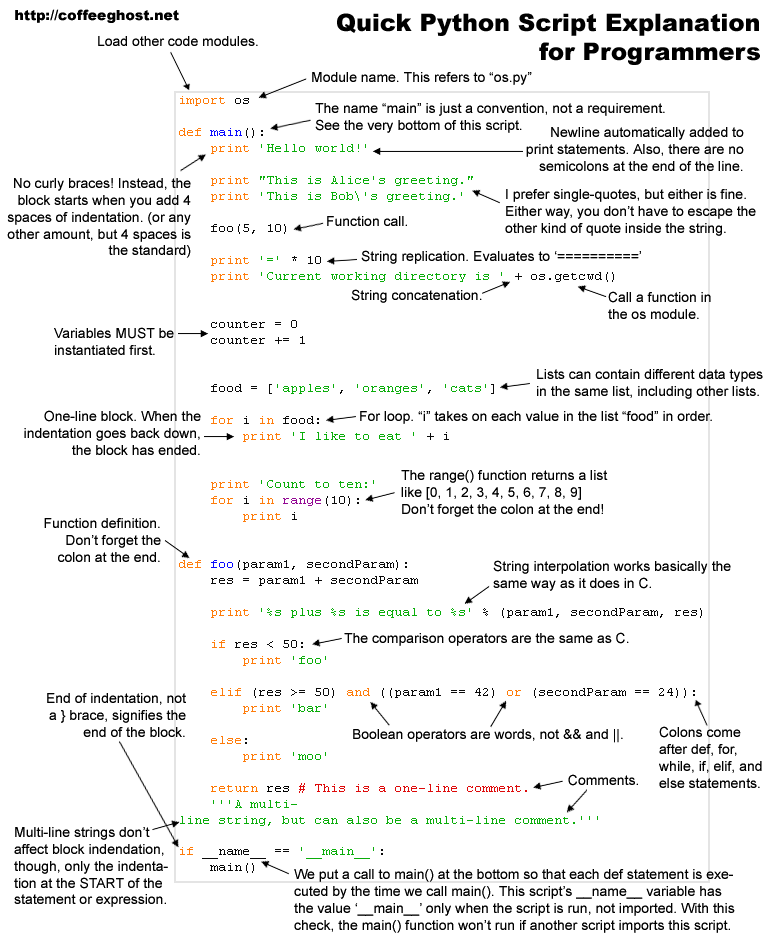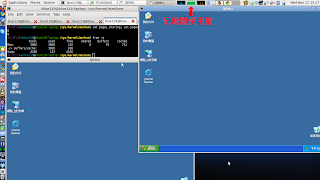剛剛逛 Tsung's Blog 看到一篇分享 Python Cheat Sheet 的文章就想起,以前也曾經找過相關的東西,個人記性不是那麼好,只要過一陣子沒寫 Code 語法很快就會忘記,所以看 Cheat Sheet or Quick Reference 是最好的 recall 方式。
Quick Python Script Expalanation for Programmers from http://coffeeghost.net
中文版 from http://wiki.woodpecker.org.cn/
Python 2.6 Quick Reference
Nov 24, 2010
Nov 20, 2010
Kernel Shared Memory (KSM)
Kernel Shared Memory[1] 有時也被稱為 Kernel Samepage Merging 是在 linux 2.6.32[2] 被加入 main tree 裡,簡單的話,它的目地如 XEN的 Memory CoW[3] 與 VmWare 的 Transparent Page Sharing[4] 一樣,把相同內容的 page merge 在一起就是做 de-duplication 的動作讓記憶體空間更有效的被利用,當然相對地,需要花更多的 CPU 效能來做這些事,不過相對上來說,因該還是值得的。
動手玩看看前,先確定 linux kernel > 2.6.32 and Enable KSM
KSM 只能使用在利用 madvise syscall 將記憶體區塊設為 MADV_MERGEABLE,另外如要取消改為 MADV_UNMERGEABLE。所以需要確認 KVM 的版本 > v0.12.0-rc0。
linux 有 Enable KSM 的話,/sys/kernel/mm/ksm/ 會有以下檔案
開始使用
1. 開啟 KSM 功能
2. 開二個相似的 VM image
下面的二張圖是有開KSM跟沒關的差別,可明顯的看出,開了KSM的記憶體使用量少了一半左右
[1] http://lwn.net/Articles/306704/
[2] http://kernelnewbies.org/Linux_2_6_32
[3] http://www.xen.org/files/xensummit_fall07/18_GregorMilos.pdf
[4] http://kb.vmware.com/kb/1021095
動手玩看看前,先確定 linux kernel > 2.6.32 and Enable KSM
$ cat /boot/config-`uname -r` | grep KSM
CONFIG_KSM=y
KSM 只能使用在利用 madvise syscall 將記憶體區塊設為 MADV_MERGEABLE,另外如要取消改為 MADV_UNMERGEABLE。所以需要確認 KVM 的版本 > v0.12.0-rc0。
linux 有 Enable KSM 的話,/sys/kernel/mm/ksm/ 會有以下檔案
pages_shared how many shared pages are being used
pages_sharing how many more sites are sharing them i.e. how much saved
pages_unshared how many pages unique but repeatedly checked for merging
pages_volatile how many pages changing too fast to be placed in a tree
full_scans how many times all mergeable areas have been scanned
run Whether the KSM process is running.
sleep_millisecs how many milliseconds ksmd should sleep before performing another page scan.
開始使用
1. 開啟 KSM 功能
echo 1 > /sys/kernel/mm/ksm/run
2. 開二個相似的 VM image
/opt/bin/qemu -hda xp.raw -m 1024 &
/opt/bin/qemu -hda xp2.raw -m 1024 &
下面的二張圖是有開KSM跟沒關的差別,可明顯的看出,開了KSM的記憶體使用量少了一半左右
[1] http://lwn.net/Articles/306704/
[2] http://kernelnewbies.org/Linux_2_6_32
[3] http://www.xen.org/files/xensummit_fall07/18_GregorMilos.pdf
[4] http://kb.vmware.com/kb/1021095
Nov 11, 2010
讓你的封包,送出時自動加上 VLAN ID
在 Linux 下,使用 VLAN 的方法
1. insert 802.1q kernel module
2. create a vlan id on NIC by vconfig。
4. 測試前的準備:
此例中,在eth0上加上 vlanid 111,成功之後,會多出一個 eth0.111 的network device,只要是從這個 device 出去的封包,會自動加上 802.1Q 的 header
1. insert 802.1q kernel module
sudo modprobe 8021q
2. create a vlan id on NIC by vconfig。
sudo vconfig add eth0 111
Added VLAN with VID == 111 to IF -:eth0:-
3. start up eth0.111
sudo ifconfig eth0.111 192.168.1.2 up
4. 測試前的準備:
sudo ifconfig eth0.111 192.168.1.25. 利用 wireshark 抓出來的封包
eth0.111 Link encap:Ethernet HWaddr 00:21:70:ff:d7:88 inet addr:192.168.1.2 Bcast:192.168.1.255 Mask:255.255.255.0 inet6 addr: fe80::221:70ff:feff:d788/64 Scope:Link UP BROADCAST RUNNING MULTICAST MTU:1500 Metric:1 RX packets:0 errors:0 dropped:0 overruns:0 frame:0 TX packets:3 errors:0 dropped:0 overruns:0 carrier:0 collisions:0 txqueuelen:0 RX bytes:0 (0.0 B) TX bytes:238 (238.0 B)
此例中,在eth0上加上 vlanid 111,成功之後,會多出一個 eth0.111 的network device,只要是從這個 device 出去的封包,會自動加上 802.1Q 的 header
Subscribe to:
Comments (Atom)




